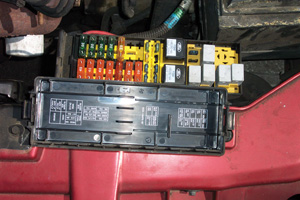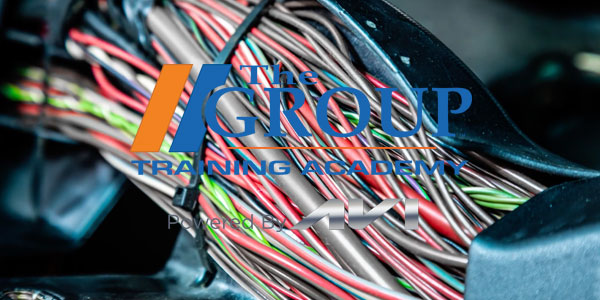The battery and alternator are both part of the charging system. The battery stores electrical energy chemically so the starter can crank the motor. As soon as the engine starts, the alternator kicks in and begins to produce voltage and current to recharge the battery and supply power to the rest of the electrical system. The voltage and current produced by the alternator depends on engine speed (the higher the RPM, the higher the current output), the state of the battery charge (a low battery will increase the charging output), and the demands on the electrical system (lights, ignition,
accessories, etc.).

All automotive batteries are 12 volts. Voltage is created by an electro-chemical reaction between lead cell plates inside the battery and sulfuric acid. The acid in most car batteries is liquid (wet cell), but in “absorbent glass mat” (AGM) batteries, the acid is in a paste or gel between the plates. AGM batteries cannot spill and typically have a longer service life than conventional lead-acid wet cell batteries.
Average battery life is about four to five years in most areas of the country, with life being shorter in hotter climates. Water loss due to high underhood temperatures and overcharging can shorten battery life, as can vibration damage or chronic undercharging. Car batteries must be maintained at or near full charge, otherwise the plates can sulfate causing a loss of storage capacity. If a battery will not accept or hold a charge, it needs to be replaced.
Replacement batteries must be the same “group” size (height, width, length and post configuration) as the original to fit the vehicle properly. The battery “Cold Cranking Amp” (CCA) capacity should also be the same or higher than the original battery. The higher the number, the more amps the battery can provide for reliable cold starting.
Battery date codes are also important. Batteries age on the shelf, so the oldest ones should always be sold first to keep your stock fresh. The number/letter date code on the battery reveals when it was manufactured. The number indicates the year, and the letter corresponds to the month (A = January, B = February, C = March, etc.).
Batteries are dry-charged at the factory, but may have to be recharged to bring them up to full charge before they are installed. Related items that may be needed include replacement battery cables, clamps, battery tray and mounting hardware.
The charging output of the alternator is controlled by a voltage regulator (internal or external), or by the engine computer. Alternators produce an alternating current (AC) output that is converted into 12 volts of direct current (DC) by diodes (the rectifier assembly) on the back of the alternator. Overloading the alternator can overheat and damage the diodes, causing a reduction in the unit’s output. Alternator output can be tested with a volt meter, ammeter or bench tester. If output does not meet specifications, your customer needs a new alternator. Unnecessary returns and warranty claims can be greatly reduced by always testing a customer’s old alternator. If the alternator tests good, the problem is not the alternator but something else in the charging system.
Replacement alternators (new or remanufactured) should always have the same or higher amp rating as the original. An upgrade option here would be a “high output” alternator designed to handle higher loads in vehicles with high electrical demands.
Starters come in several basic types: direct drive, gear reduction, and permanent magnet. Starters are fairly rugged but can be damaged by prolonged cranking if an engine fails to start. The drive mechanism may also be damaged if the starter engages or fails to disengage when the engine is running.
Because of the high load on the starter, good electrical connections are extremely important. Loose, corroded or undersized battery cables may not deliver enough amperage to crank the engine at normal speed, causing hard starting. Starter drives (which can be replaced separately on many starters) can also fail, preventing the motor from engaging the flywheel. A bad starter solenoid or relay can also prevent a starter from working. Accurate diagnosis of a starter problem is important to prevent unnecessary part replacements and returns.
Battery cables should be replaced if loose, damaged or too small for the application. Engine ground straps are equally important and are an often overlooked cause of charging and starting problems.
Fuses protect against electrical overloads and are designed to blow if too much current overloads a circuit. Fuses come in various amp (current) ratings. Replacement fuses must have same amp rating as the original. Fuses are located in a box or panel under the dash, and in the engine compartment. Some circuits also have “in-line” fuses or fusible links to protect against overloads.
Relays are switching devices used to route power to other components such as the fuel pump, ABS system, lights and so on. Relays may be located in the engine compartment or almost anywhere in the vehicle (locating a particular relay often requires referring to the vehicle’s wiring diagram). If a relay fails, the device it powers will not operate.
Lamps and bulbs for interior and exterior illumination come in various sizes and styles. Replacement lamps and bulbs must have the same mounting and electrical connections as the original (compare the old and new bulbs or refer to an application chart), but headlamps can often be upgraded for more light output with higher output bulbs. Avoid handling halogen headlamp bulbs with bare fingers as the oil from your hands can cause the quartz glass bulb to fail when it gets hot.











